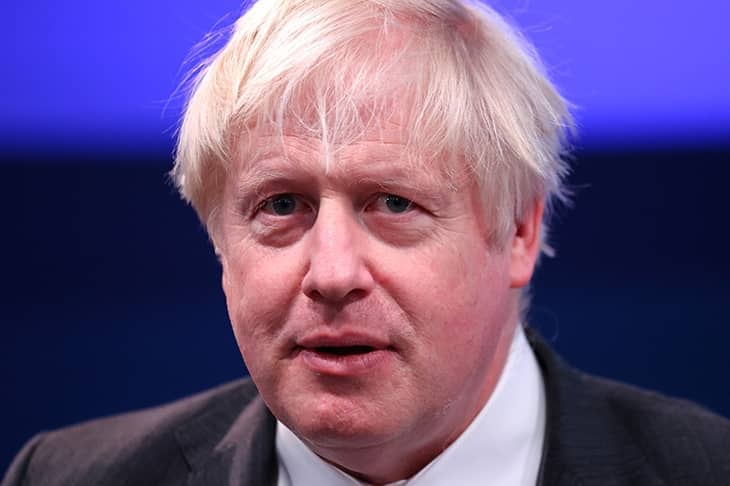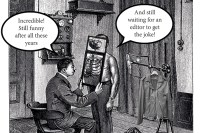Boris Johnson knows the value of three-word slogans. ‘Take back control’ and ‘get Brexit done’ helped propel him to his two greatest electoral triumphs. But another three words that no one would ever put on a campaign poster might determine the success of his premiership: public service reform.
Johnson has taken an unusual decision for a Tory prime minister. He has chosen to raise personal and business taxes to put more money into public services. This gamble may pay off if people feel that services have improved. If they do not, he risks an angry electorate who are paying more tax yet not getting anything extra in return.
No. 10 is aware of this danger, which is why Johnson puts such an emphasis on delivery. But this is more difficult than it sounds. Just look at what has happened to the reconstituted No. 10 delivery unit. Johnson brought back this Tony Blair innovation this year at the recommendation of Michael Barber, its first head. Emily Lawson — who led the operational delivery of the vaccine rollout — was recruited to run it. The message was obvious: every process in government should be as rapid and successful as the vaccine programme. Yet a few months on and Lawson is, temporarily, back with the NHS. The booster jab programme had run into trouble in her absence and No. 10 is relying on vaccines to keep Covid at manageable levels this winter. Lawson is expected to stay in her role until at least the new year.

Those with knowledge of the vaccination campaign say it has been stretched too thin by trying to do boosters while also vaccinating teenagers and persuading those who have never been jabbed to come forward. The fact that No. 10 felt the need to reinstate Lawson in her old role, leaving her deputy in charge of the delivery unit until her return, shows how few senior officials are regarded as being particularly effective at delivery.
Delivery also requires a change in mindset. Currently there’s a tendency in government to announce spending increases and think that means the problem is solved, when it obviously isn’t. One Tory MP in a marginal seat complains that the briefings he receives from Conservative Campaign Headquarters are ‘all about how much money we are spending, not what we are achieving with the money’.
The main reason the Tories have raised taxes is to put more money into the NHS. The view was that without more cash there was no chance of clearing the post-Covid backlog and the Tories couldn’t go into the next election with millions on the waiting list. But to reduce the backlog, more capacity needs to be created, otherwise targets will just end up distorting things with hospitals moving staff off other projects to try to hit them.
It is worrying that the Department of Health doesn’t know how many extra doctors and nurses it will need to clear the backlog. The government is currently miles off even its pre-pandemic target of 6,000 extra doctors by 2024. Optimistic numbers suggest there might be 300 more than in 2019, but others think things have gone backwards.
Given how long it takes to train a doctor, the only way the target can be met is through easing immigration restrictions, bringing some retired doctors back into the profession and improving the retention of existing staff. The government, however, is dragging its feet on making it easier for doctors from countries with high-quality medical training — such as Norway, Germany, Canada, New Zealand — to come and work here. At the same time, the amount of bureaucracy facing retired doctors who are prepared to return part-time is so onerous that few bother. Even more alarmingly, the British Medical Association reports that a quarter of GPs are expecting to go part-time in the next 12 months. If these problems can’t be sorted, clearing the backlog will become even more difficult and the pressure on accident and emergency departments will only grow. When people can’t see a doctor face-to-face they are more likely to go to A&E, which is one of the main reasons for the current waiting times crisis.
Boris Johnson’s gamble in raising taxes will only pay off if people feel that public services have improved
Sajid Javid thinks that another way to create more capacity in the NHS is through better organisation of its existing resources. The Health Secretary is struck by the fact that 40 per cent of the NHS budget is spent on treating preventable diseases but only 5 per cent goes on prevention. This kind of shift, though, won’t yield benefits for years to come. In the short term, Javid thinks that diagnostic and surgical hubs can help to clear the backlog. The logic is that a surgical hub doing one set of operations will become particularly efficient at carrying it out.
Education reform is the great cross-party success story of public service reform and Javid has seen how the academies programme has allowed outstanding schools to take over ones that are underperforming. He wants to enable something similar in the NHS, allowing the best performing trusts to take on struggling hospitals. The thinking is that these hospital chains would help spread best practice.
Javid’s other aim is to get the NHS to improve its use of data and technology; remarkably, one in five NHS trusts are still largely paper based. I understand that the Department of Health wants someone with private sector experience of data and tech for the new NHS chairman.
The large prioritisation of resources towards the NHS in last week’s spending review reveals the government’s view of where the political risks lie. But in terms of the country’s future economic prospects, the challenge in education is of even greater importance. It is telling just how many of the Department for Education’s key ‘performance metrics’ in the spending review relate to apprenticeships.
Since taking office, the Tories have already tried NHS reform once with Andrew Lansley’s effort for the coalition government. The new Health and Care Bill effectively dismantles many of the Lansley reforms. The next effort will have to be more successful, or the Tories won’t get another chance to try to reform the health service for a very long time.







Comments